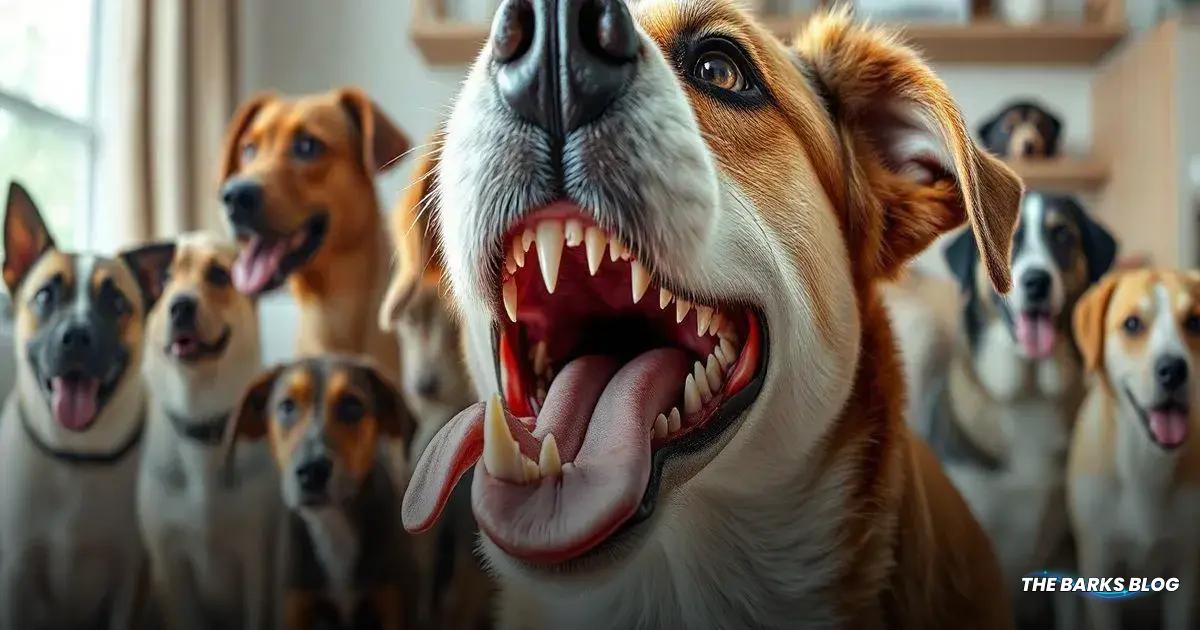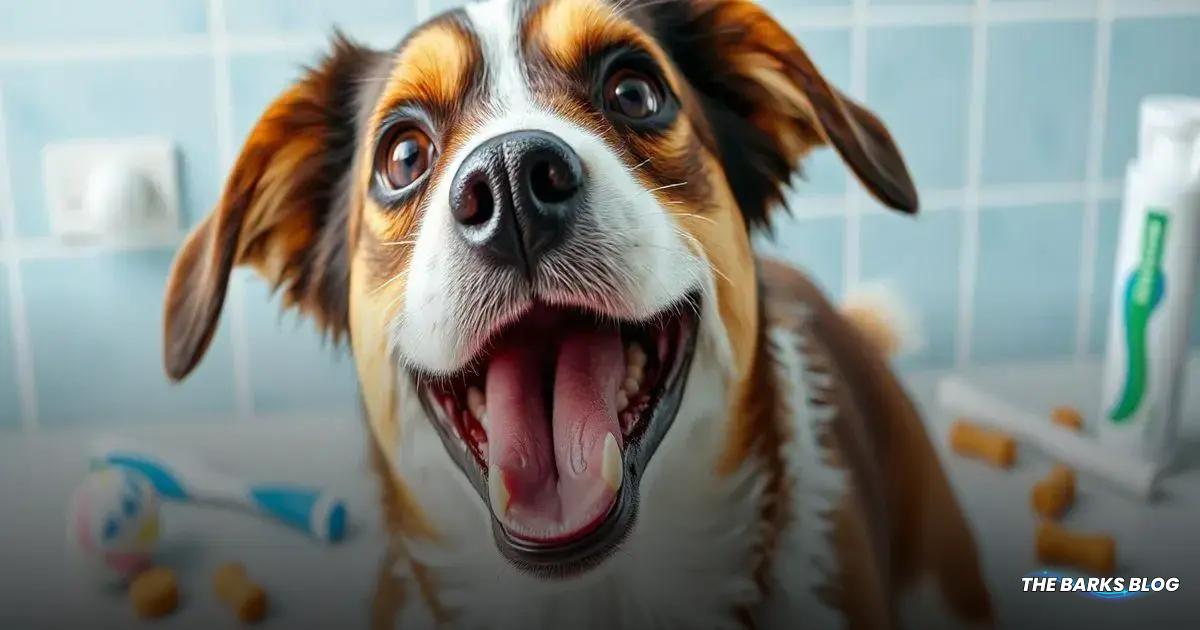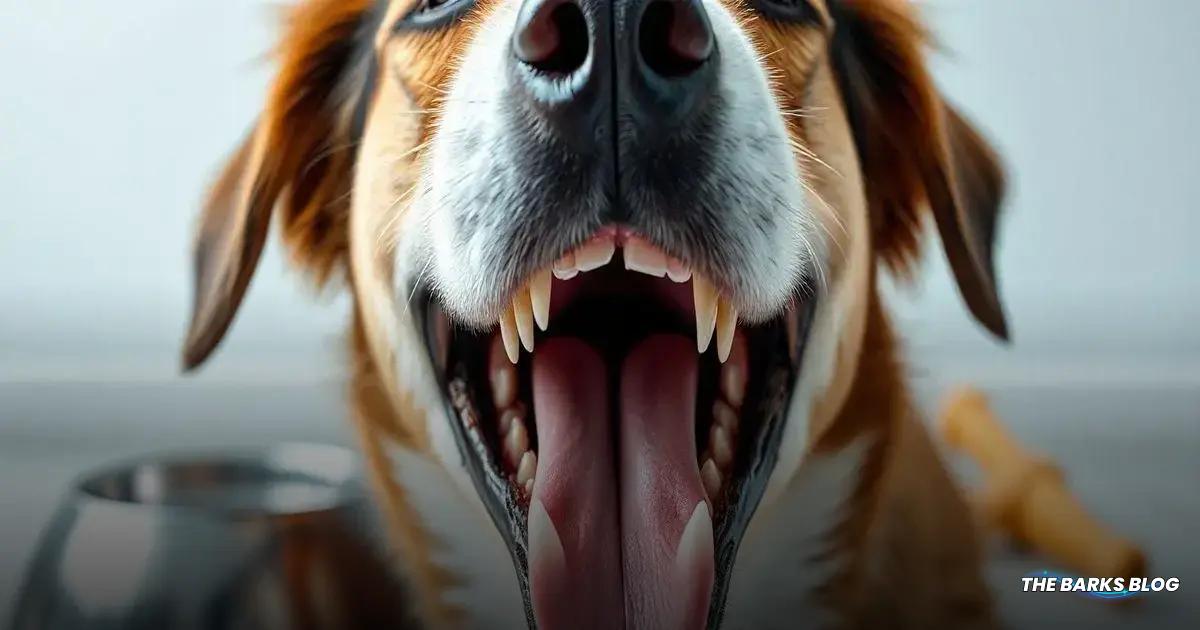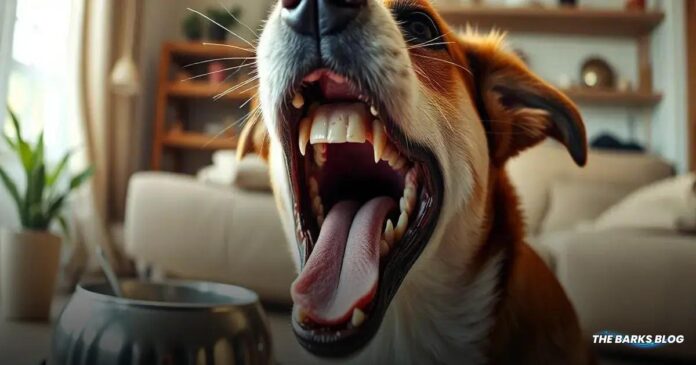Maintaining your dog’s oral health is essential for their overall well-being, involving regular dental check-ups, proper care of their mouth anatomy, and recognizing signs of oral issues like bad breath and swollen gums. Prioritizing dental hygiene through brushing and veterinary visits can significantly improve your dog’s quality of life and prevent serious health problems.
A dog’s mouth is essential for their daily activities, including eating, breathing, and communicating. Understanding the anatomy of a dog’s mouth and how to care for it is crucial for pet parents.

Dog Mouth Anatomy
The dog mouth anatomy is quite fascinating and serves multiple functions that are essential for a dog’s daily life. Just like in humans, a dog’s mouth contains various components: the tongue, teeth, gums, cheeks, and lips. Each part plays a vital role in how dogs interact with their environment.
The mouth is located at the front, lower part of the dog’s face, and is lined with mucus membranes that secrete saliva. This saliva is crucial as it keeps the mouth moist, aiding in the movement of food and debris down the throat and into the digestive tract.
Dog Tongue
The dog’s tongue is not just for licking! It helps guide food and water into the esophagus. The tongue is equipped with taste buds, allowing dogs to process different tastes and scents. Additionally, the tongue plays a significant role in thermoregulation; when dogs pant, they use their tongues to help cool their bodies down. Moreover, dogs often use their tongues for grooming, keeping themselves clean.
Dog Teeth
A dog’s teeth are designed for various functions, including chewing, tearing, and grinding food. They also help dogs play with other dogs and can be used defensively. The dental structure includes incisors for nibbling, canines for puncturing, and molars for grinding food. Each type of tooth has a unique purpose that contributes to the dog’s overall health and ability to eat properly.
Dog Gums
The gums in a dog’s mouth are crucial as they hold the teeth in place. Healthy gums are typically bright pink and moist. Monitoring the color and condition of your dog’s gums can provide insight into their overall health. If the gums appear pale or do not return to pink quickly after being pressed, it may indicate a health issue that requires veterinary attention.
Dog Lips
Dogs do have lips, often referred to as flews. These lips differ from human lips in both appearance and function. The shape and size of a dog’s lips can vary significantly by breed. When dogs pull their lips back, it may look like they are smiling, but this behavior can also indicate excitement or anxiety. Some breeds have folds in their lips, which can trap moisture and food debris, making it essential to keep these areas clean to prevent infections.

Common Canine Mouth Problems
Maintaining your dog’s oral health is crucial, as various common canine mouth problems can develop if proper care is not taken. Here are some of the most frequent issues pet parents should be aware of:
Gingivitis is the inflammation of the gums caused by the buildup of bacteria, food particles, and dirt along the gumline. This condition can make a dog’s gums sensitive and inflamed, leading to bleeding and infection. Bad breath is also a common symptom. If left untreated, gingivitis can progress to more serious periodontal disease.
A dog’s teeth are essential for their overall health, and neglecting dental care can result in dental issues such as tartar buildup, rotten teeth, and severe periodontal disease. These problems can cause discomfort and difficulty eating, and in severe cases, dogs may need to have teeth extracted.
Dog mouth sores, or oral ulcers, are lesions that can appear inside or outside a dog’s mouth. These sores can range in size and depth and may be caused by infections, trauma from foreign bodies, or periodontal disease. Monitoring your dog’s mouth for these sores is essential, as they can indicate underlying health issues.
Oral tumors in dogs can be either cancerous or benign. It is crucial to have any unusual growths or bumps checked by a veterinarian. Early diagnosis can lead to more effective treatment. Epulis, a common non-cancerous tumor, grows from gum tissue and typically requires surgical removal.
Certain breeds, such as Pugs and French Bulldogs, have more wrinkles and folds around their mouths, making them susceptible to lip fold dermatitis. This condition occurs when moisture and food debris become trapped in the folds, leading to redness, inflammation, and a foul odor. Keeping these areas clean and dry is vital to prevent this issue.
If you notice bleeding from your dog’s mouth, it could be caused by periodontal disease, oral tumors, or trauma. Blood in your dog’s saliva or on their chew toys is a sign that you should contact your veterinarian immediately to determine the cause.
Bad breath, known as halitosis, can result from various factors, including poor dental hygiene, certain foods, or underlying health issues. If your dog’s bad breath becomes sudden or lasts for an extended period, it’s essential to consult your veterinarian to rule out any serious problems.

How to Clean a Dog’s Teeth
Keeping your dog’s teeth clean is essential for their overall health and well-being. Here are some effective tips on how to clean a dog’s teeth and maintain their oral hygiene:
Regular Brushing
Brushing your dog’s teeth at least 2-3 times a week is crucial. Use a toothbrush designed specifically for dogs and a toothpaste formulated for canine use. Never use human toothpaste, as it can contain harmful ingredients for dogs.
Getting Your Dog Used to Toothbrushing
Start by getting your dog accustomed to having their mouth handled. Gently lift their lips and touch their teeth with your finger. Gradually introduce the toothbrush and toothpaste, allowing them to taste it before brushing. Make the experience positive by offering treats or praise.
Choose the Right Tools
Invest in a good quality dog toothbrush and toothpaste. Dog toothbrushes come in various sizes and styles, including finger brushes, which can be easier for beginners. Look for toothpaste that contains enzymes to help break down plaque and tartar.
Professional Dental Cleanings
In addition to at-home care, consider scheduling yearly professional dental cleanings with your veterinarian. These cleanings are essential for removing tartar and plaque buildup that regular brushing may miss. Your vet can also check for any potential dental issues.
Monitor Chew Toys and Treats
Be mindful of the chew toys and treats you give your dog. Avoid very hard items that can chip their teeth, and opt for dental chews that are specifically designed to promote oral health. These can help reduce plaque and tartar while satisfying your dog’s natural chewing instincts.
Watch for Signs of Dental Problems
Regularly inspect your dog’s mouth for signs of dental issues, such as bad breath, swollen gums, or loose teeth. If you notice any concerning symptoms, consult your veterinarian promptly to address potential problems before they escalate.

Signs of Oral Health Issues
Being aware of the signs of oral health issues in your dog is crucial for maintaining their overall well-being. Here are some common indicators that your furry friend may be experiencing dental problems:
Bad Breath
While dogs naturally have a distinct odor, bad breath that suddenly worsens can be a sign of dental disease or other health issues. If your dog’s breath smells particularly foul, it may indicate the presence of plaque, tartar, or even periodontal disease.
Swollen or Bleeding Gums
If you notice that your dog’s gums are swollen or bleeding during brushing or when they chew, this could be a sign of gingivitis or other gum diseases. Healthy gums should be bright pink and not bleed easily.
Difficulty Eating
Watch for signs that your dog is having difficulty eating or chewing their food. If they seem hesitant to eat, drop food, or favor one side of their mouth, it could indicate dental pain or discomfort.
Excessive Drooling
Excessive drooling can be another red flag. While some drooling is normal, an increase in saliva production may indicate dental problems, mouth sores, or other health issues that need attention.
Loose or Missing Teeth
If you notice that your dog has loose or missing teeth, it’s essential to consult your veterinarian. This can be a sign of advanced dental disease, which may require treatment or extraction of affected teeth.
Changes in Behavior
Any significant changes in your dog’s behavior, such as becoming more irritable, avoiding play, or being less affectionate, can be linked to oral pain or discomfort. If your dog seems unusually withdrawn, it’s worth investigating their oral health.
Oral Tumors or Growths
Keep an eye out for any unusual growths or tumors in your dog’s mouth. These can be benign or malignant, so it’s crucial to have any lumps or bumps evaluated by a veterinarian as soon as possible.

Importance of Regular Dental Check-ups
The importance of regular dental check-ups for your dog cannot be overstated. Just like humans, dogs require routine dental care to maintain their overall health and prevent serious issues. Here are several reasons why these check-ups are essential:
Preventing Dental Disease
Regular dental check-ups help identify and prevent dental diseases before they become severe. Conditions like gingivitis and periodontal disease can lead to pain, tooth loss, and even systemic health issues if left untreated.
Early Detection of Oral Issues
During a veterinary dental exam, your vet can spot potential problems early, such as tooth decay, gum disease, or oral tumors. Early detection allows for timely intervention, which can save your dog from pain and costly treatments down the line.
Professional Cleaning
Professional dental cleanings performed by veterinarians are crucial for removing tartar and plaque that regular brushing may miss. These cleanings help prevent the buildup of harmful bacteria that can lead to oral health problems.
Overall Health Monitoring
Your dog’s oral health is closely linked to their overall health. Regular dental check-ups allow veterinarians to monitor any changes in your dog’s health, as oral diseases can impact other systems in the body, including the heart and kidneys.
Education for Pet Owners
During these visits, veterinarians can provide valuable education for pet owners on proper dental care techniques, including brushing methods, suitable dental products, and dietary recommendations to promote oral health.
Improved Quality of Life
By maintaining good oral health through regular check-ups, you can significantly improve your dog’s quality of life. Healthy teeth and gums contribute to better eating habits, less pain, and a happier, more active lifestyle.
Building a Health Record
Regular dental visits help build a comprehensive health record for your dog. This history is beneficial for tracking changes over time and can assist your veterinarian in making informed decisions about your dog’s health care.
Conclusion
Maintaining your dog’s oral health is a vital aspect of responsible pet ownership. Understanding the anatomy of your dog’s mouth, recognizing the signs of oral health issues, and implementing regular dental care practices can prevent serious problems down the line.
Regular dental check-ups with your veterinarian are essential for early detection and treatment of potential issues, ensuring your furry friend enjoys a healthy and happy life.
By prioritizing your dog’s dental care, you contribute significantly to their overall well-being and longevity.
FAQ – Frequently Asked Questions about Dog Mouth Health
How often should I brush my dog’s teeth?
You should aim to brush your dog’s teeth at least 2-3 times a week to maintain good oral hygiene.
What are the signs of dental disease in dogs?
Signs of dental disease include bad breath, swollen or bleeding gums, difficulty eating, excessive drooling, and loose or missing teeth.
Is it safe to use human toothpaste on dogs?
No, human toothpaste can contain ingredients that are harmful to dogs. Always use toothpaste specifically formulated for dogs.
How can I prevent dental issues in my dog?
Regular brushing, providing dental chews, and scheduling routine veterinary dental check-ups can help prevent dental issues.
What should I do if I notice bad breath in my dog?
If your dog’s bad breath suddenly worsens or persists, consult your veterinarian to rule out any underlying health issues.
Are professional dental cleanings necessary for dogs?
Yes, professional dental cleanings are essential for removing tartar and plaque that regular brushing may miss and for maintaining your dog’s overall oral health.




